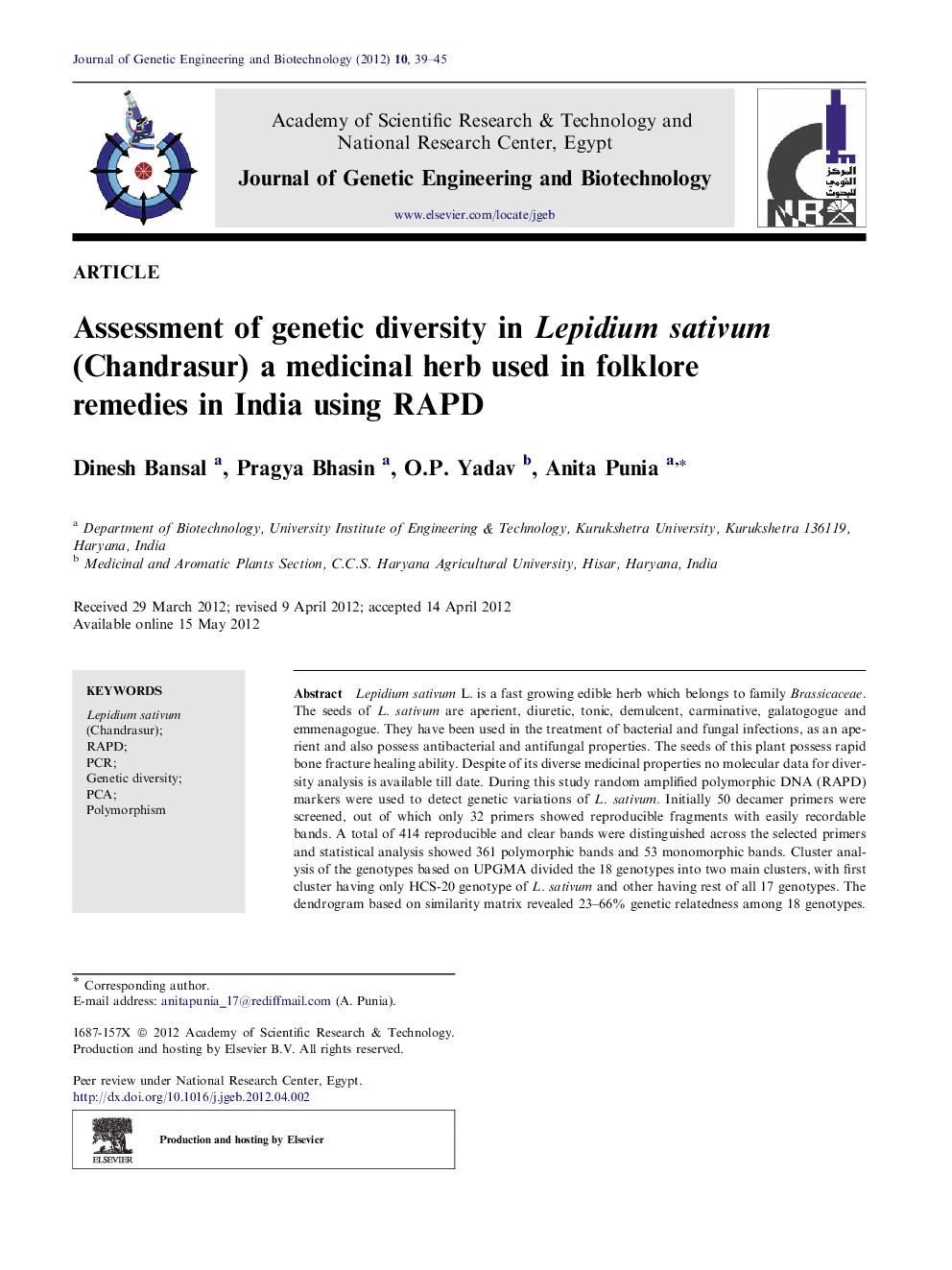| Article ID | Journal | Published Year | Pages | File Type |
|---|---|---|---|---|
| 2087970 | Journal of Genetic Engineering and Biotechnology | 2012 | 7 Pages |
Lepidium sativum L. is a fast growing edible herb which belongs to family Brassicaceae. The seeds of L. sativum are aperient, diuretic, tonic, demulcent, carminative, galatogogue and emmenagogue. They have been used in the treatment of bacterial and fungal infections, as an aperient and also possess antibacterial and antifungal properties. The seeds of this plant possess rapid bone fracture healing ability. Despite of its diverse medicinal properties no molecular data for diversity analysis is available till date. During this study random amplified polymorphic DNA (RAPD) markers were used to detect genetic variations of L. sativum. Initially 50 decamer primers were screened, out of which only 32 primers showed reproducible fragments with easily recordable bands. A total of 414 reproducible and clear bands were distinguished across the selected primers and statistical analysis showed 361 polymorphic bands and 53 monomorphic bands. Cluster analysis of the genotypes based on UPGMA divided the 18 genotypes into two main clusters, with first cluster having only HCS-20 genotype of L. sativum and other having rest of all 17 genotypes. The dendrogram based on similarity matrix revealed 23–66% genetic relatedness among 18 genotypes. The results of the present study can be used for molecular breeding and improvement of L. sativum for various desired traits through hybridization in future.
